
New research suggests mixing languages during study session might be a more effective learning method
A new paper from the lab of Waisman investigator Margarita Kaushanskaya, PhD, professor of communication sciences and disorders at UW-Madison, provides evidence that suggests when trying to learn two languages, studying them both during the same session rather than separately might be the more beneficial strategy.
October 8, 2025
Integrating trauma awareness into early language support
Learning language in early childhood occurs through interaction between children and their caregivers. It is a foundational process that allows children to participate in social interactions, learn from the world, and develop other essential skills such as literacy. Having a language delay or disorder is associated with greater risk for experiencing trauma and vice versa. Furthermore, children’s and caregivers’ trauma histories can impact their individual strengths and needs related to participation in early language intervention.
August 25, 2025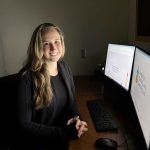
Supporting individual strengths and needs: New study finds that parenting beliefs are a more effective indicator of strong early language skills in children than socioeconomic status
Research has shown that children with strong early language skills are less likely to have long-term adverse academic, social, and health outcomes.
August 11, 2025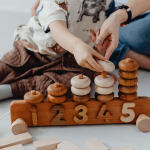
New insights into language development: The role of joint attention in kids with Down syndrome and autism
Attention is a key component of learning. Think of how hard it is to learn someone’s name if all you can think about is the eyelash on their cheek. The same can be said for language learning.
March 25, 2025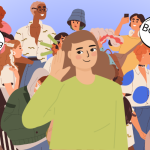
Listening through the lens of culture: How acoustic environments shape language development
The influence of culture on an individual’s everyday life, behavior, and values is as ubiquitous as the air we breathe.
January 15, 2025
Hearing loss and cognition both play a role in speech recognition for young adults with Down syndrome
For young adults with Down syndrome, understanding speech is not only related to hearing abilities, but it may also be impacted by cognition.
December 4, 2024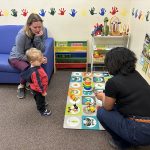
Behind the scenes of research participation at the Waisman Center: Infant Learning Lab
The lab focuses on studying how infants and young children learn language, learn the meaning of words, find patterns in language and track the properties of speech.
September 11, 2024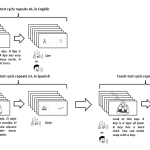
Research seeks strategies to optimize dual language learning in bilingual children
Bilingual children can be flexible in the ways they learn two languages simultaneously.
July 24, 2024
Estudio busca estrategias para optimizar el aprendizaje de idiomas en niños bilingües
English Los niños bilingües pueden ser flexibles en la forma en la que aprenden dos idiomas simultáneamente. Aunque el ritmo de aprendizaje puede diferir entre estrategias, los niños pueden aprender palabras nuevas tanto en inglés …
July 24, 2024
How physical environment shapes language learning in toddlers
The environment in which toddlers learn language may have a greater impact on word learning than previously understood.
January 24, 2024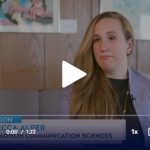
Rebecca Alper on long-term impacts of early language skills
Early language skills are one of the best predictors of academic, social, vocational outcomes.
December 7, 2023
Wisconsin educators take on the surge in early speech delays
“Early language skills are one of the best predictors of academic, social, vocational outcomes,” said Rebecca Alper
November 30, 2023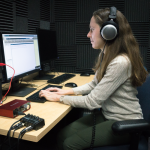
How Waisman researchers are advancing knowledge of speech and language in Individuals with IDDs
People say between 150 and 200 words a minute on average during a casual conversation.
September 19, 2023
The Little Listeners Project: studying language development in toddlers with autism
Even through cute but unintelligible babbles, infants are hard at work learning how to become successful communicators.
May 31, 2023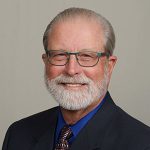
SALT & PEPPER: Seasoned tools to better understand speech and language disorders
We might know salt and pepper as the dynamic duo of seasonings that adds flavor to foods, but in the language and speech research world, the duo has a different meaning.
May 23, 2023
Sensory responses in autistic children are linked to a small under-explored region tucked deep down in the brain called the brainstem
The same external sensory stimulus – a flashing light, a hug, or hearing one’s name – can provoke a different reaction in every person.
April 5, 2023
In the lab where sign language advances science: A spotlight on Phu Duong
Epigenetics – the study of how environment can change and affect how genes function – was a new field for Phu Duong, PhD.
March 29, 2023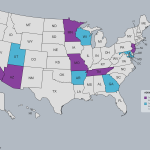
Let’s talk numbers: Epidemiology of intellectual and developmental disabilities research at the Waisman Center
In 2001, newborn screening of Hmong babies had an alarming number of positive results for an enzyme deficiency called MBADD.
March 14, 2023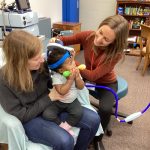
From brain stimulation to speech and language interventions, Waisman researchers are making strides to better understand and treat individuals with cerebral palsy
More than 10,000 children are born each year with cerebral palsy (CP) making it the most common motor disability in childhood.
March 8, 2023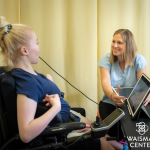
The Waisman Center’s comprehensive care and strides toward early interventions for children with cerebral palsy: Clinics and outreach
The clinics and the research laboratories of the Waisman Center intertwine to care for individuals with cerebral palsy. The mission is one: to improve the outcomes for individuals with cerebral palsy.
March 7, 2023- More Speech & Language posts
Advancing knowledge of human development, developmental disabilities, and neurodegenerative diseases.
